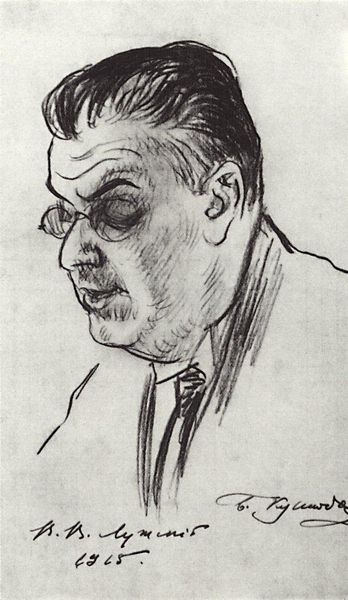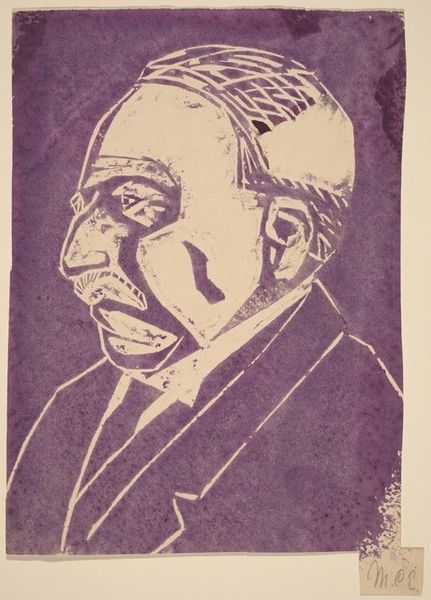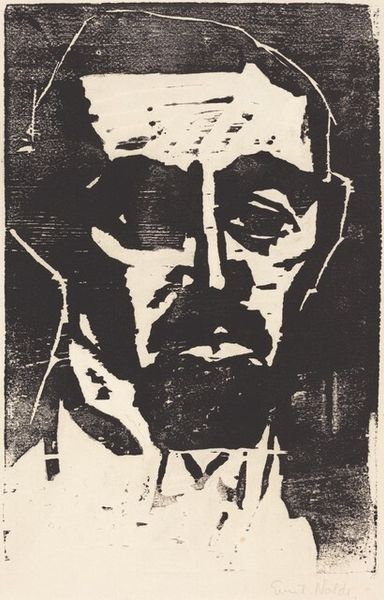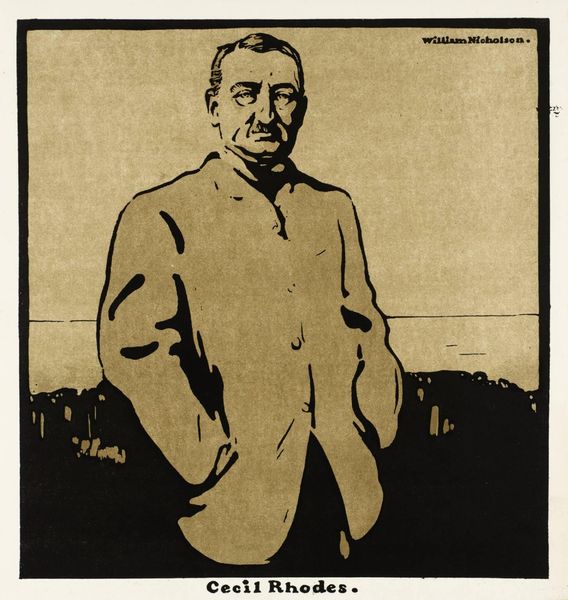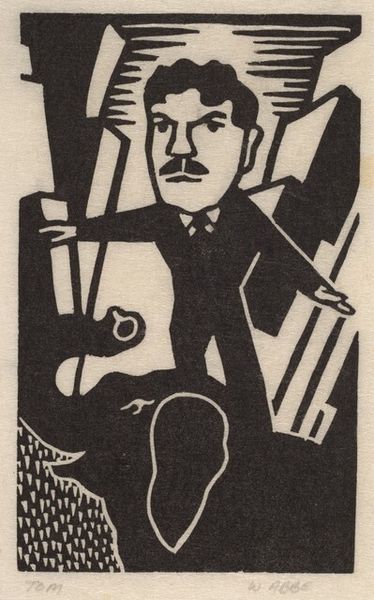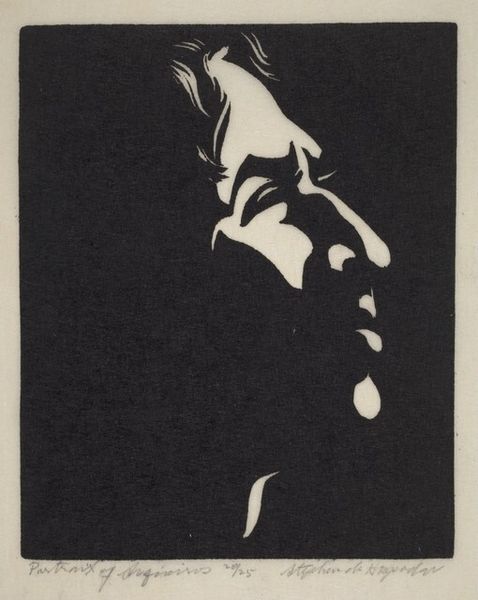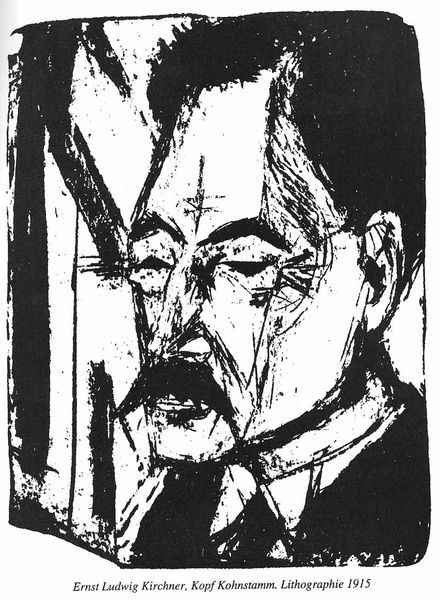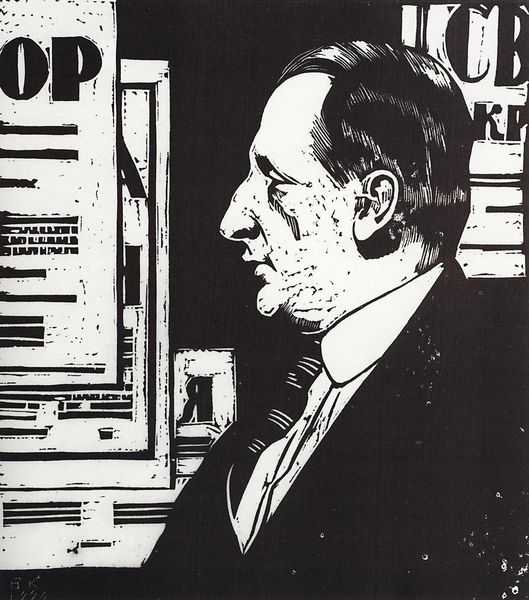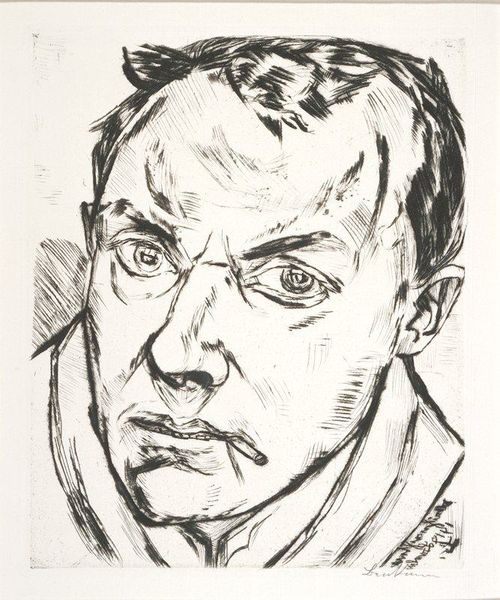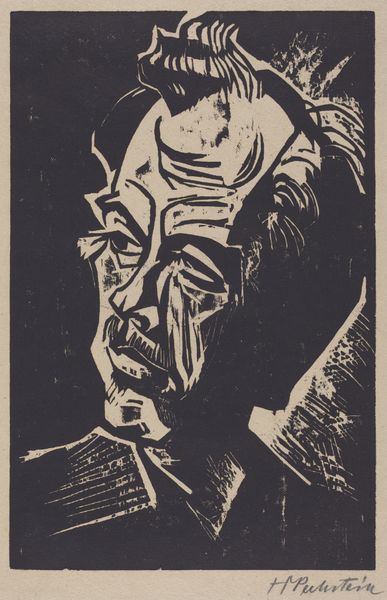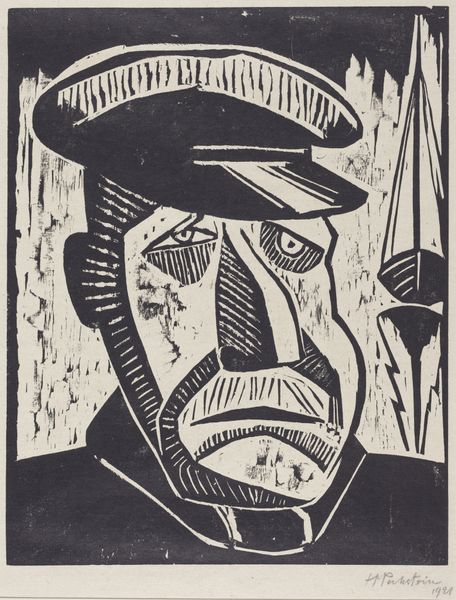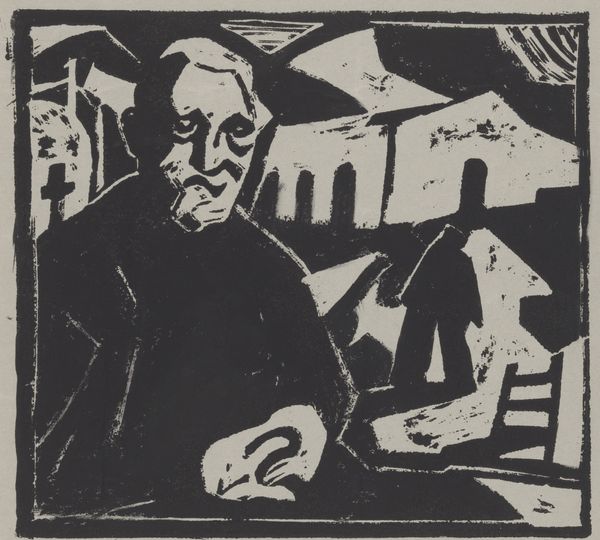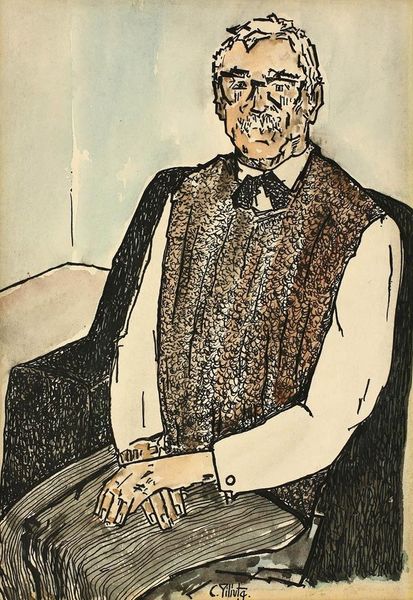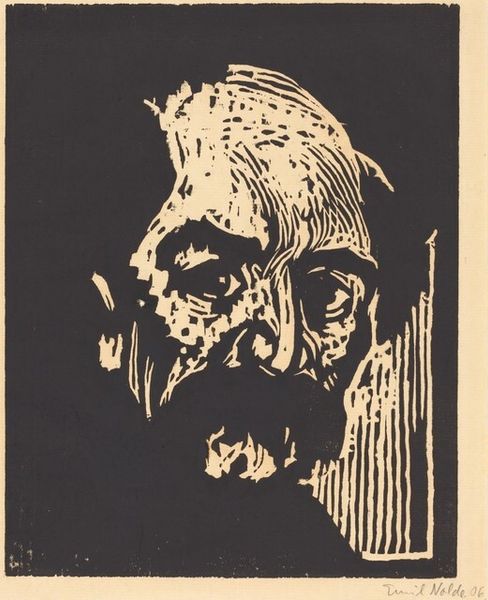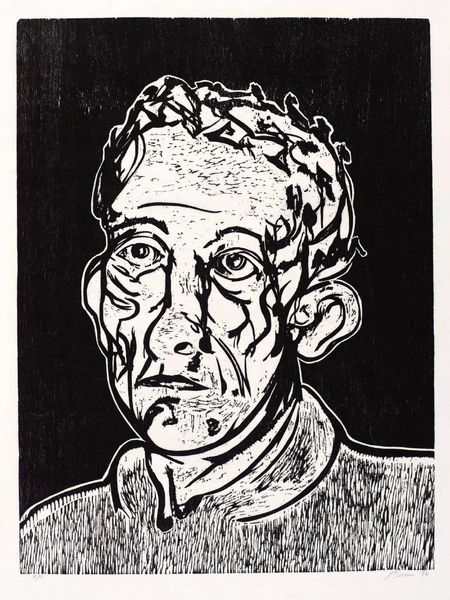
drawing, print, woodcut
#
portrait
#
drawing
# print
#
expressionism
#
woodcut
Copyright: Public domain
Editor: This is Boris Kustodiev’s 1926 woodcut, "Portrait of Soviet actor Nikolay Monakhov." I find the high contrast and graphic style so striking! What's your interpretation? Curator: Indeed! The severe black and white adds to its impact. For me, beyond just a likeness, Kustodiev captures the essence of the Soviet actor within a specific cultural milieu. Look at the curtain and vaguely neoclassical structure. Don’t they echo a theatrical set, hinting at Monakhov’s profession, while framing him as a cultural icon? Editor: That’s a fascinating point. The surroundings really do contribute to the narrative. The symbols next to "1926" looks like the cyrillic numerals "XXX", so "30", but do you think that detail is deliberate, some comment about the age of the sitter, maybe? Curator: Perhaps, or it might be that number indicated some event or stage production with which Monakhov was associated. But notice too the carefully etched background elements--they seem deliberately stylized, even a bit dreamlike. How does that affect your perception of Monakhov himself? Editor: I hadn’t considered the dreamlike aspect. It makes him less of a simple portrait and more like an archetype, representative of something larger than just one actor. Almost like a stage character he's perpetually embodying. Curator: Exactly! The artist uses Monakhov as a symbol for Soviet artistic achievement and projecting its vision, perhaps. The symbols work together. It’s a fascinating blend of the personal and the representational, a hallmark of powerful portraiture. Editor: I’m leaving with a much richer understanding of how images can carry cultural significance.
Comments
No comments
Be the first to comment and join the conversation on the ultimate creative platform.
